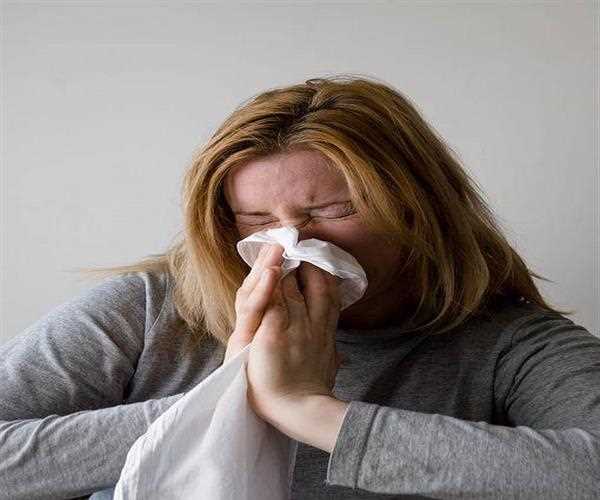What is an allergy?
An allergy is the body's reaction to a substance it perceives as a harmful 'intruder'. For example, contact with normally harmless substances, such as pollen, can cause the immune system (the body's defense system) to respond. The substances that cause these reactions are called allergens.
What is an allergic reaction?
An 'allergic reaction' is the body's response to an allergen. A series of events occur that cause an allergic reaction. If you are allergic, your body reacts by producing allergic antibodies (IgE) when you are first exposed to a certain allergen (such as pollen). The role of these antibodies is to find the allergen and remove it from the system. As a result, a chemical called histamine is released, which causes allergy symptoms.
What are the types of allergies and how to treat them?
You may be allergic to a variety of things, including pollen, pet dander, mold, and house dust mites.
Flowerpot
Seasonal allergic rhinitis or pollen allergy is an allergic reaction to pollen. This causes inflammation and swelling of the mucous membrane of the nose and the protective tissue of the eye (conjunctiva).
Symptoms include sneezing, redness (feeling of fullness), itching, and watery eyes, nose, and mouth. Treatment options include over-the-counter antihistamines, anti-leukotrienes, nasal steroids, nasal antihistamines, and nasal cromolyn. In some people, allergic asthma symptoms (wheezing, shortness of breath, coughing, and/or chest tightness) can be triggered by exposure to pollen. Avoiding pollen can help reduce symptoms. When there is a lot of pollen, don't leave the house, close the windows and use the air conditioner. Ask your healthcare provider about immunotherapy ('allergy shot') to treat your pollen allergy.
House dust mites
Dust mites are tiny organisms that live in the dust and fibers of household items such as pillows, mattresses, carpets, and rugs. Mites thrive in warm, moist places.
The symptoms of a house dust mite allergy are similar to those of a pollen allergy. Dust mite covers (plastic/polyurethane sealing covers) can be used over pillows, mattresses, and box springs to prevent dust mite allergy. Also, clean the carpet regularly or vacuum it with a high-efficiency filter vacuum cleaner.
Molds
Molds are small molds (such as Penicillium) that have spores that float in the air like pollen. Fungi are a common cause of allergies. Mold can be found in damp areas such as basements, kitchens, or bathrooms, as well as under outdoor lawns, leaf piles, turf, mulch, or mushrooms. Fungal spores peak in warm, humid weather.
Animal fur
Allergic reactions can be caused by proteins secreted by the sweat glands of the animal's skin, proteins secreted by the wool, and proteins in the animal's saliva. Preventive measures are not as effective as removing pets from the home. However, since many people are reluctant to do this, the next best thing to keeping pets out of their bedroom is to use an air purifier with a HEPA filter and bathe your pet regularly (cat or dog).
Latex
Some people develop a latex allergy after repeated exposure to latex. Rubber gloves used for surgery or house cleaning are a major cause of this type of reaction. If you are allergic to latex, you may experience rashes, hives, watering, irritation, wheezing, and itchy skin. Allergic reactions to latex can be mild, such as redness and itching of the skin. Serious reactions can occur if mucous membranes are exposed during surgery or dental or gynecological examinations.
Some food
A food allergy occurs when the body produces certain antibodies to certain foods. Allergic reactions occur within minutes of eating the food and can be severe. The most common food allergies in adults are shellfish, peanuts, and tree nuts. For children, these include milk, eggs, soy, wheat, shellfish, peanuts, and tree nuts. People with food allergies may experience itching, hives, nausea, vomiting, diarrhea, difficulty breathing, and swelling around the mouth.
It is very important to avoid foods that cause allergy symptoms. If you (or your child) have a food allergy, your doctor may prescribe injectable epinephrine (adrenaline) that you take with you at all times. This is necessary if you accidentally eat an allergic food. There is a new treatment for peanut allergy called oral immunotherapy.
Insect poison (bite)
If you are stung by a bee, the normal reaction is pain, swelling, and redness around the sting area. Large local reactions include swelling outside the puncture site. For example, if you stub your ankle, your leg may swell. The most serious reaction to an insect bite is an allergic reaction that requires immediate treatment. Symptoms of an allergic reaction to an insect bite include:
- breathing difficulties. Generalized (extensive) hives that look like red rashes that spread to other areas of the sting.
- swelling of the face, neck, or mouth. Hoarseness or difficulty swallowing.
- anxiety and restlessness. rapid pulse.
- Dizziness or a sudden drop in blood pressure. If this reaction occurs, it can cause a serious and life-threatening reaction if stung while at rest.
Allergic reactions are treated with epinephrine (adrenaline). If you are allergic to bee stings, see a board-certified allergist/immunologist for skin and/or blood tests to check for bee venom allergy. If a venom allergy is confirmed, venom immunotherapy is recommended. This helps reduce the chances of the bite causing a serious reaction.




Leave Comment